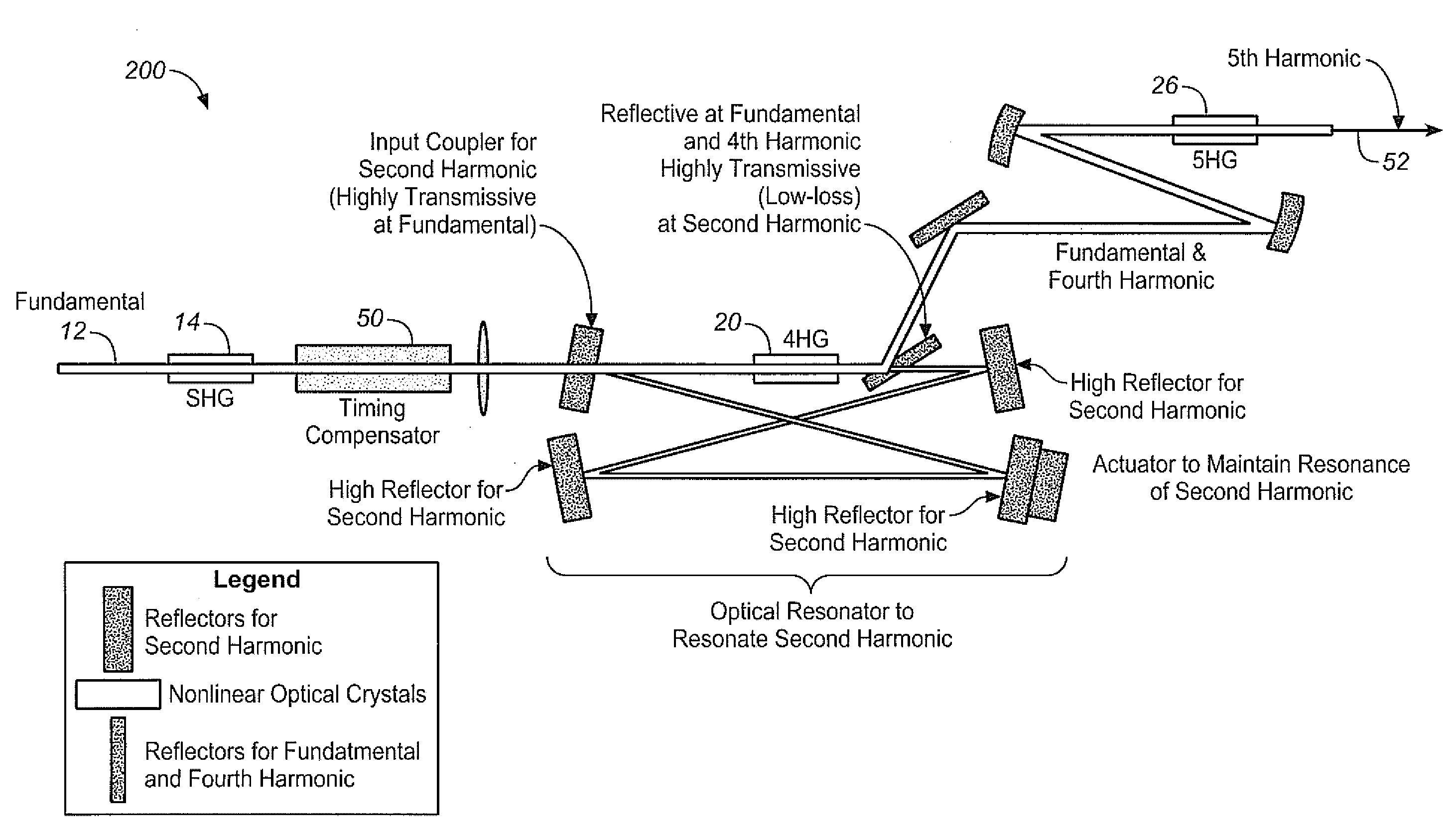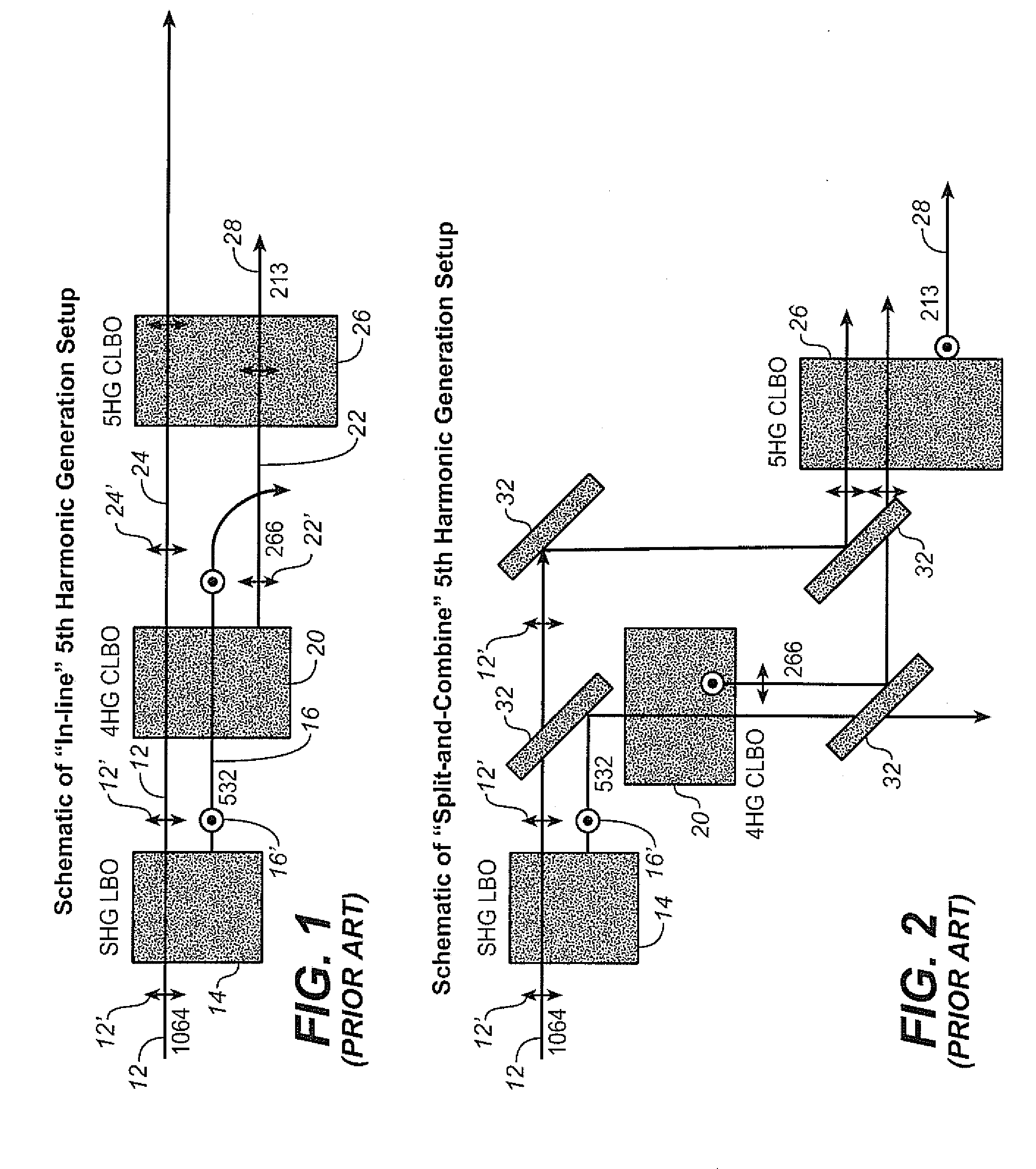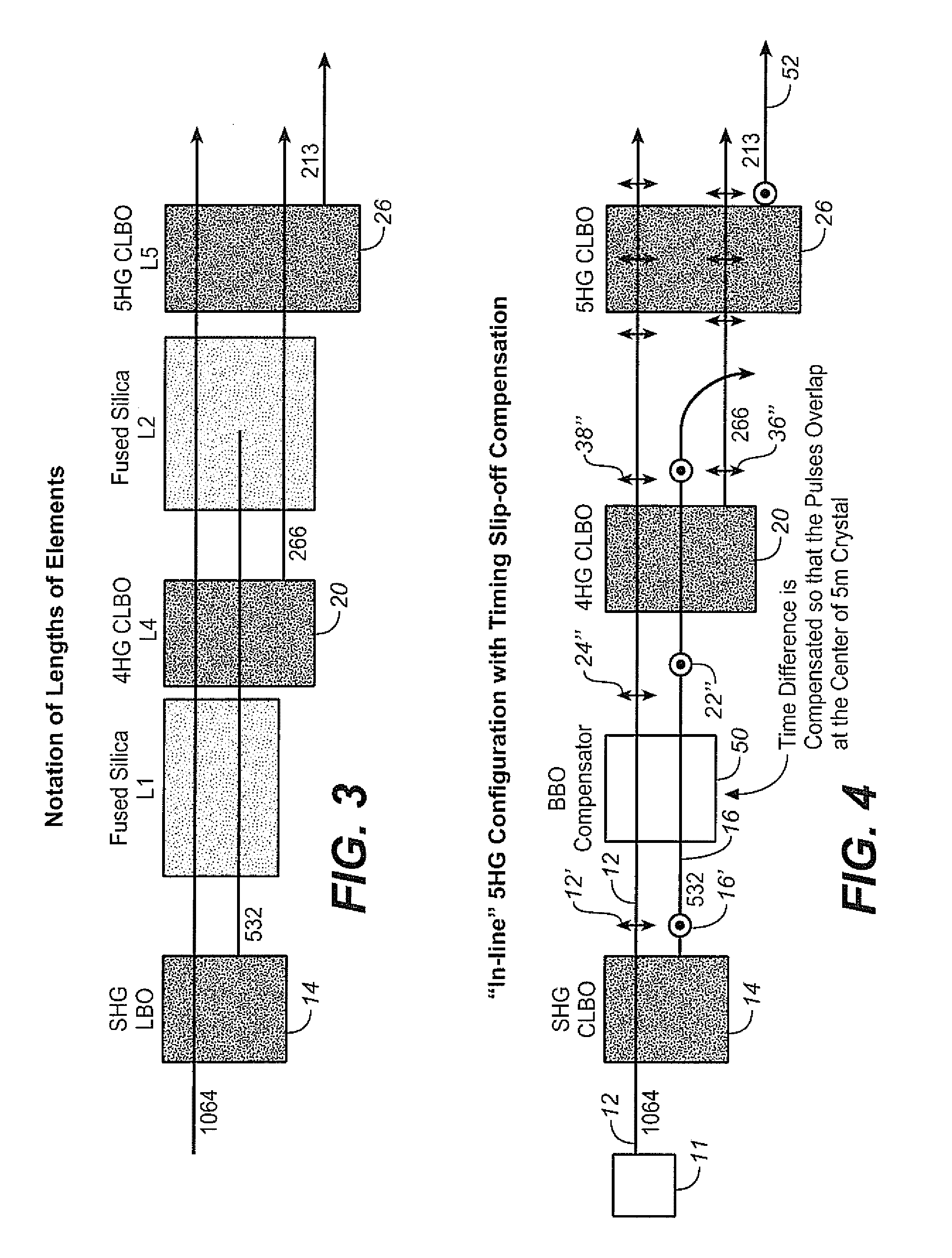Efficient pulse laser light generation and devices using the same
a laser light and laser light technology, applied in the field of laser light generation, can solve the problems of complicated and bulky setup of fig. 2, and achieve the effect of reducing the first time delay
- Summary
- Abstract
- Description
- Claims
- Application Information
AI Technical Summary
Benefits of technology
Problems solved by technology
Method used
Image
Examples
Embodiment Construction
[0018]A significant advantage of the “in-line” configuration of FIG. 1 is the simplicity, as opposed to another conventional setup shown in FIG. 2. As explained above and depicted in FIG. 1, the fundamental and 4th harmonic pulses do not meet in the 5HG crystal 26. The typical length of the crystals is of the order of centimeters, and the total thickness of the lenses used in the optical set up is also of the order of centimeters, and usually fused silica is used as the material. The group indices, which dictate the arrival time of the pulse at each wavelength, are listed in Table 1 below. As the group index is always smaller for the pulse at fundamental wavelength, the pulse at fundamental always advance with respect to other pulses.
TABLE 1Group indices of material usedIndexGroupdifference fromIndexfundamentalCLBO 4HG (9 = 62 deg.)Fundamental (1064 nm)1.45568e~ray2nd harmonic (532 nm)1.47994o~rayΔn2 = 0.069774th harmonic (266 nm)1.62414e-rayΔn4 = 0.16846CLBO 5HG (( ) = 68.4 deg.)Fu...
PUM
 Login to View More
Login to View More Abstract
Description
Claims
Application Information
 Login to View More
Login to View More - R&D
- Intellectual Property
- Life Sciences
- Materials
- Tech Scout
- Unparalleled Data Quality
- Higher Quality Content
- 60% Fewer Hallucinations
Browse by: Latest US Patents, China's latest patents, Technical Efficacy Thesaurus, Application Domain, Technology Topic, Popular Technical Reports.
© 2025 PatSnap. All rights reserved.Legal|Privacy policy|Modern Slavery Act Transparency Statement|Sitemap|About US| Contact US: help@patsnap.com



